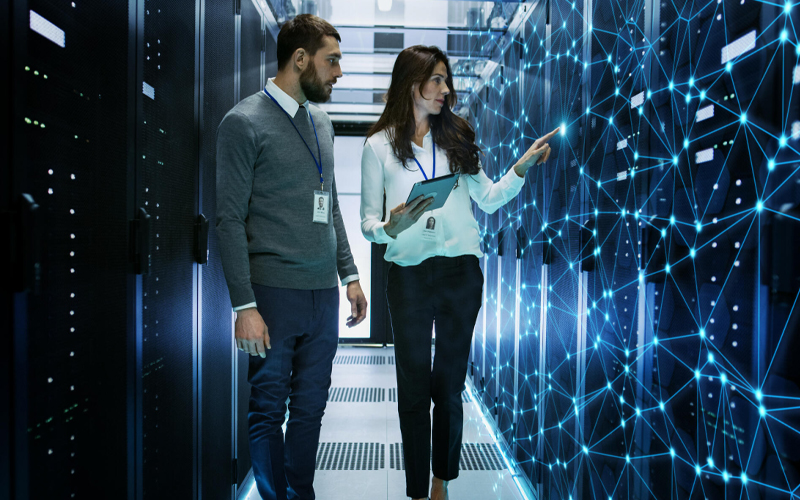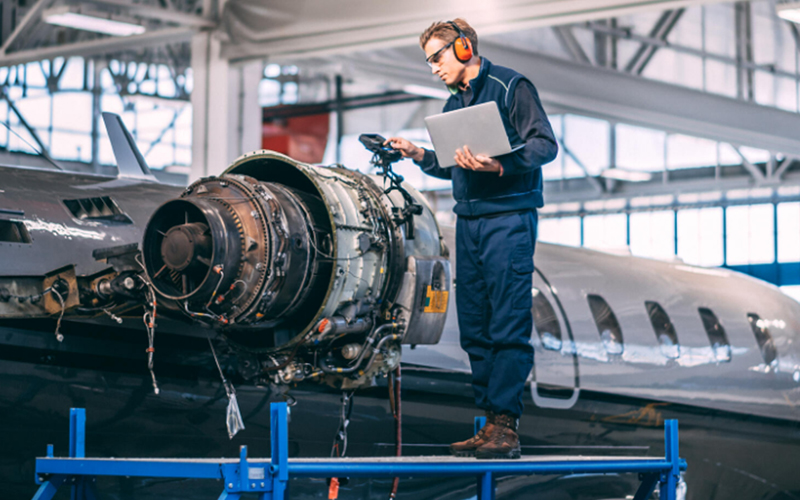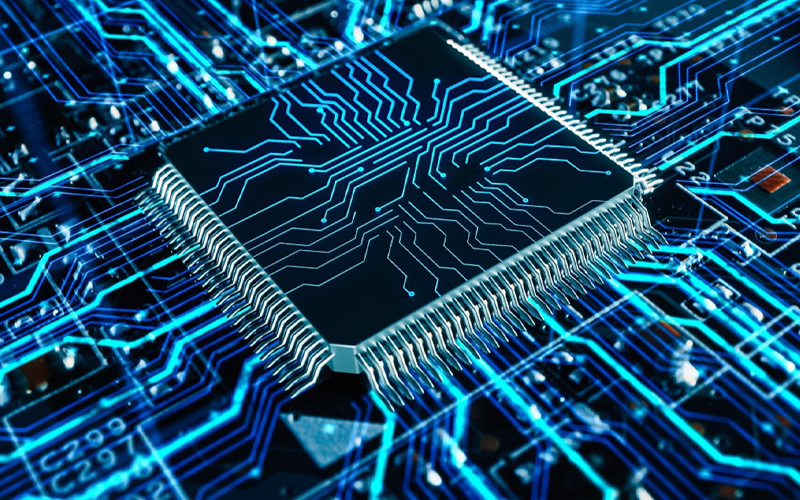Not so long ago, we were worried that robots were coming to take away our jobs. While the fear remains, many are convinced that it is not a fully automated world that we are likely to witness! This is mainly because of instances of failures that occurred in autonomous systems. Many tech leaders are of the view that it is not ''robots'' but ''cobots'' that will take centerstage in the future!
Cobots are bots that work with man-machine collaboration. One of the key technologies that foster a culture of collaborative work of man and machine is Augmented Reality (AR).
What is AR?
Augmented Reality is a technology that blurs the gap between real and virtual worlds. This technology overlays virtual elements onto real-world environments, paving the way for endless possibilities. AR facilitates human interaction with virtual objects and data within natural environments. With the power of Machine Learning (ML), Computer Vision, and advanced sensors, AR enhances our physical reality by augmenting it with digital content. This revolutionary technology is disrupting virtually every industry from retail to manufacturing by bridging the gap between humans and machines. It drives better collaboration, improves processes in product development, enhances training and hiring of staff, and more,
Let’s delve into how AR is bridging the gap between humans and machines across sectors:
Aeronautics
Various processes in aeronautics such as design-to-market and maintenance, etc., are complex and demanding. These processes require highly specialised technicians who have expertise in specific aircraft systems.
AR technology supports aeronautical technicians by:
- Clearly displaying the specific parts in the aircraft that require maintenance.
- Verifying the processes performed by the technicians with the help of an AR-based body tracking software.
- Enhancing the precision of assembly through CAD model superimpositions in AR that provide a step-by-step virtual assembly process.
- Facilitating a seamless collaboration of experts through AR remote assistance.
Construction
Building Information Models (BIM) are created by overlaying CAD models in AR/VR. The data generated through these models helps in optimising construction projects leading to enhanced productivity and cost-savings.
Another application of AR in construction boosting the efficiency of the sector is the use of AR devices like tablets or smartphones to visualise the precise location of the construction process. These devices can also help determine where future installations can be envisaged.
AR visualisation helps urban planners model the layout of an entire city.
Navigation
AR technology is being widely used to track the surroundings of a vehicle and display vital information on the driver’s panel. These include information such as static GPS data, dynamic direction arrows, reading road signs, the vehicle’s direction preview in the driver’s rear camera, and more.
Healthcare
AR-based systems provide healthcare professionals with computer-processed imaging data in real time. Wearables, head-mounted displays, and mobile apps have enhanced the quality of healthcare delivery and patient experience.
AR helps healthcare professionals overcome limitations in areas like physical therapy and rehabilitation, surgery, accessing real-time patient data, seamless hospital navigation, and more.
AR technology is making huge strides in medical training as well. Medical students can learn human anatomy with the help of AR which enables them to delve into the human body in an interactive 3D format. AR can also boost the depth and effectiveness of medical training in multiple areas including the operation of medical equipment or performing complex surgeries.
Retail
AR technology is being harnessed to enhance the customer experience in both online and brick-and-mortar stores. The technology helps shoppers to view the product in realistic environments on their smartphones, etc. For instance, shoppers can view how a furniture item will look placed in specific locations at their home and assess its suitability.
Manufacturing
AR has revolutionised the manufacturing sector by fostering increased innovation. It facilitates improved product quality, better decision-making, enhanced operational efficiency, greater employee safety, and reduced costs.
AR provides product specialists with a 3D representation of various elements of a product. This helps them to enhance the product quality and deliver the product to the market quickly.
AR offers professionals contextualised information and insights into equipment performance. This data speeds up problem-solving and helps optimise processes.
Logistics
AR has made inroads into different logistics functions to enhance productivity. The technology provides real-time insights into operations thereby boosting accuracy and efficiency.
AR enhances inventory tracking accuracy by quickly scanning and monitoring product locations in a warehouse. It enhances the speed, accuracy, and safety of maintenance by providing remote assistance to technicians. AR optimises the efficiency and accuracy of warehouse operations by recommending layout and workflow changes.
AR-based systems provide an immersive training experience to new employees by generating realistic simulations of operating procedures and safety protocols.
Besides these, AR has revolutionised several other processes and systems by working as an efficient and fast support system for professionals. AR technology has filled the lacunae in human efficiency by facilitating a seamless man-machine collaboration. These are some reasons that justify Statista reports that AR software is the world’s largest segment recording a market volume of USD 11.58 billion in 2023.
For organizations on the digital transformation journey, agility is key in responding to a rapidly changing technology and business landscape. Now more than ever, it is crucial to deliver and exceed on organizational expectations with a robust digital mindset backed by innovation. Enabling businesses to sense, learn, respond, and evolve like a living organism, will be imperative for business excellence going forward. A comprehensive, yet modular suite of services is doing exactly that. Equipping organizations with intuitive decision-making automatically at scale, actionable insights based on real-time solutions, anytime/anywhere experience, and in-depth data visibility across functions leading to hyper-productivity, Live Enterprise is building connected organizations that are innovating collaboratively for the future.







